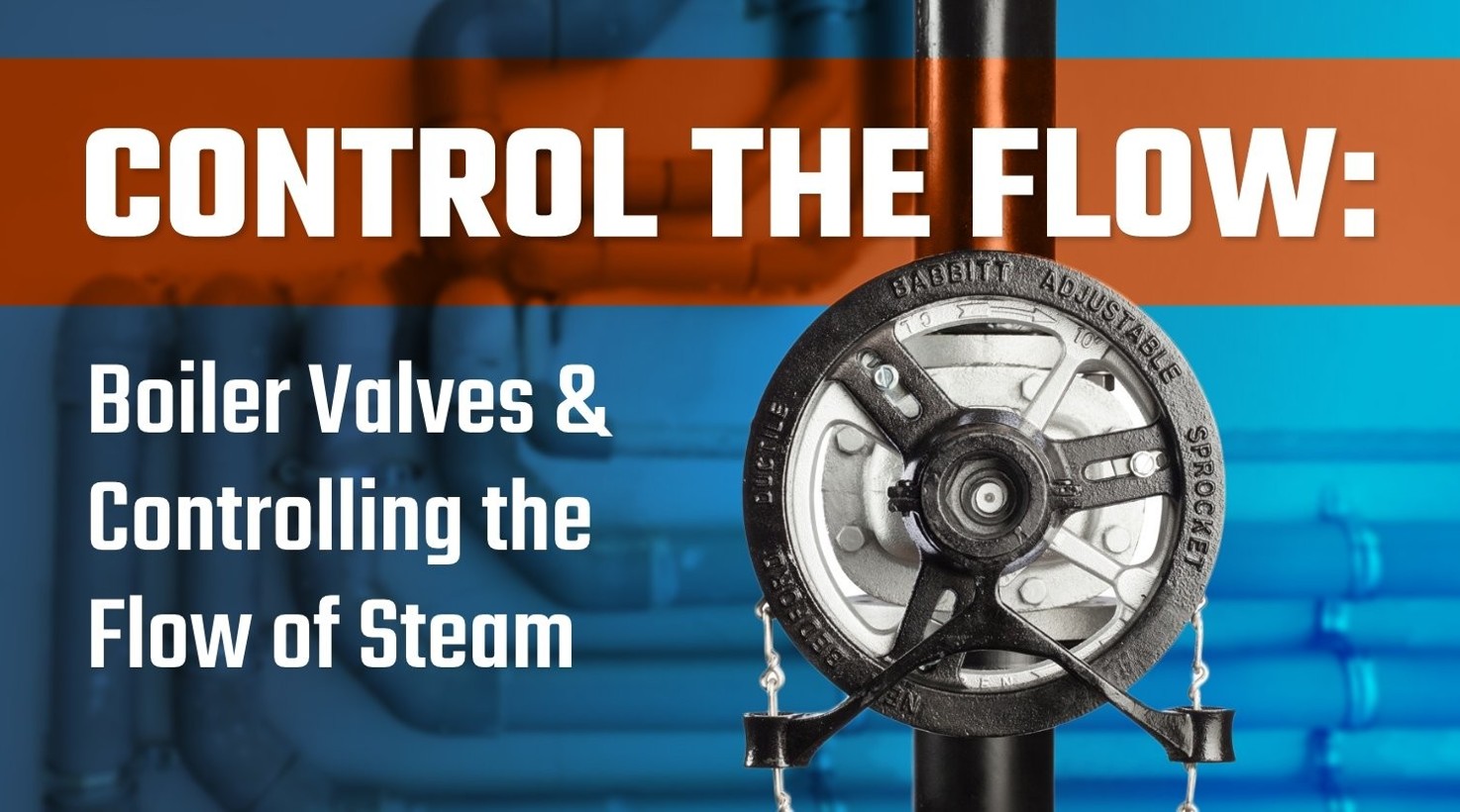VALVES KEEP IT ALL MOVING
Boilers may seem simple to the outside observer, but those of us in the business know that proper boiler operation is a carefully orchestrated symphony of temperature, pressure, water, fuel, and steam. A symphony that’s controlled by a bunch of instruments we call valves. Inside, outside, and around your boiler, you’re going to find a lot of them. Some are your basic on-off kind of valve, also known as “isolation valves”. Some have the ability to regulate the flow of water or steam by opening a little, a lot, or somewhere in between, an ability known as “modulation” or “throttling”. Each of them serves a specific purpose in keeping your boiler firing, and together, they keep it running well.
TYPES OF VALVES
There are many different kinds of hardware inside the valves in your boiler. Each is designed for a specific purpose, and operates in a specific way.
BALL VALVES have a solid ball in the center of the flow channel. That solid ball has a hole running horizontally through the middle of it. When the valve is turned, the ball rotates and the hole comes into alignment with the flow direction so that steam, fuel, or water can flow through. When the handle is turned the other way, the hole turns perpendicular to the flow, shutting off the water, fuel, or steam.
Because they only have to rotate 90 degrees to shut off the flow, ball valves don’t have to be turned very far to do their job which makes them “quick-open” valves. Because of this, they typically have a straight lever for a handle rather than a wheel. Ball valves can be used as isolation valves, because they are easy to turn off. Ball Valves, while commonly used as isolation valves, can be turned into modulating valves with the correct trim and actuation. You’ll typically see them used in blowdown lines, fuel supply lines, and water supply lines.
Speaking of ball valves, this is probably a good time to mention the WARE Mod-V series of modulating valves, designed and purpose-built by the experts at WARE using over 70 years of expertise. They’re constructed to the highest standards of quality to be the best modulating valves around. If you need a modulating valve, there’s no better option in our opinion. We put a lot into it, so you’ll get years of reliable performance out of it.
GATE VALVES operate just like the name suggests. As the handle is turned, a gate raises or lowers to let water, fuel, or steam through. Because the gate can be raised or lowered in small amounts, gate valves require a lot of movement to fully open or close which makes them “slow-open” valves. They’ll typically have a round wheel-shaped handle that takes the gate through its full range of motion. While they do offer some degree of modulation, they are considered isolation valves because they can be sealed tightly against leaks.
GLOBE VALVES operate by raising and lowering a metal sphere or disk, the “globe”, which rests in an indentation known as the “seat.” When the valve is fully closed, the globe is tightly pressed into the seat. As the valve is opened, the globe is slowly lifted out of the seat, allowing water, fuel, or steam to flow through.
Because they offer a very uniform gap for water, fuel, and steam, a gap that can be closed or widened in small increments, globe valves are ideally suited for precise modulation. In fact, many globe valves will have incremental markings on the housing that correspond to flow rates. These markings allow operators to open and close the valve to the same setting every time to maintain a consistent flow rate.
CHECK VALVES are designed to keep the flow of water or steam moving in only one direction. As long as the flow moves in the correct way, the valve stays open. If there is a sudden loss of pressure or a backflow occurs, the valve will automatically close so that no water or steam can go back the way they came.
Some check valves are gravity operated, meaning they have a flap inside that naturally drops into place to seal off the flow if the steam, fuel, or water isn’t holding them open. These are known as “swing check valves”. Because they rely on gravity, it’s important to always orient a swing check valve properly during installation. Mount it incorrectly, and gravity can’t pull the flap closed. That means it’ll stay open, and you’ll get backflow.
“Spring check” valves can be mounted in any orientation, because they have a spring that holds the flap closed. The pressure of water, steam, or fuel presses against the spring tension of the flap, allowing it to flow through. When pressure drops, though, the spring will push back enough to close the flap and prevent backflow.
You’ll typically find check valves in feedwater lines, so that water entering the boiler under pressure isn’t forced back out by the pressure inside the boiler tank once the pumps cut off. You’ll also find check valves in steam lines, so that the steam maintains a consistent pressure at the end process regardless of pressure changes further back up the supply line.
THE RIGHT RATING
No matter what kind of valve you’re using, always be sure it is correctly rated for the application. That includes proper rating for temperature and pressure, but also for whatever’s flowing through it, be it steam, water, or fuel. Using a valve that’s not rated for the application can be disastrous. I
f you have a valve that’s giving you problems, let the experts at WARE check it out. If you need a replacement valve, our online Boiler Warehouse site has a huge selection of valves rated for every condition and application. No matter what you need, WARE is here to help. Just let us know what we can do.
